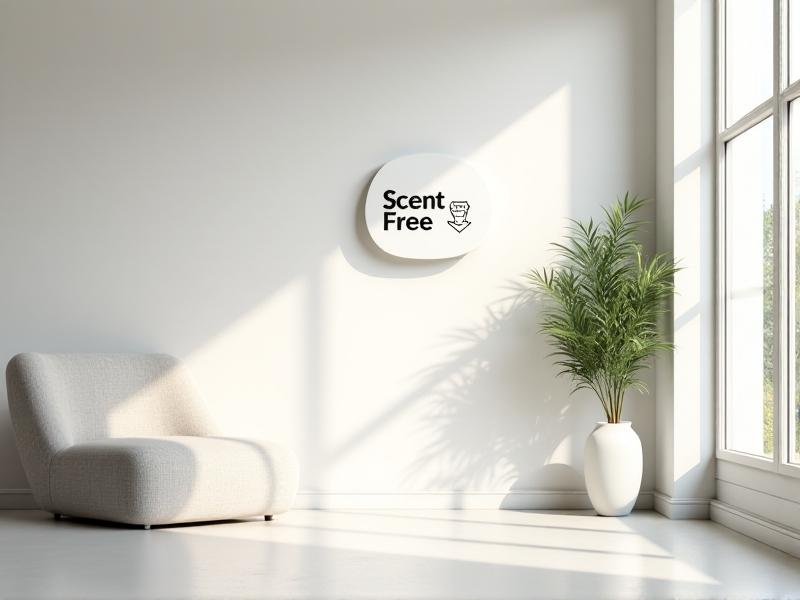Scent-Free Observation Zones for Chemical Sensitivity Accommodations
Understanding Chemical Sensitivity and the Need for Scent-Free Zones
Chemical sensitivity, also known as Multiple Chemical Sensitivity (MCS), is a chronic medical condition characterized by adverse reactions to low levels of chemicals found in everyday products. These reactions can range from mild discomfort to severe health issues, including headaches, dizziness, respiratory problems, and even cognitive impairments. For individuals with MCS, exposure to fragrances, cleaning products, and other chemical-laden items can be debilitating.
The need for scent-free observation zones arises from the growing awareness of the challenges faced by those with chemical sensitivities. Public spaces, workplaces, and healthcare facilities often contain a multitude of scents that can trigger symptoms. By creating scent-free zones, we can provide a safer and more inclusive environment for everyone, particularly those with MCS.

Designing Effective Scent-Free Observation Zones
Creating an effective scent-free observation zone requires careful planning and consideration. The first step is to identify the space that will be designated as scent-free. This could be a specific room, a section of a larger area, or even an entire building. The key is to ensure that the zone is clearly marked and easily accessible to those who need it.
Once the space is designated, it’s important to implement policies that restrict the use of scented products within the zone. This includes personal care items like perfumes, colognes, and scented lotions, as well as cleaning products and air fresheners. Educating staff and visitors about the importance of these policies is crucial for their success.
In addition to policy implementation, the physical design of the zone should also be considered. Using materials that are low in volatile organic compounds (VOCs) and ensuring proper ventilation can help maintain a scent-free environment. Incorporating natural elements like plants can also improve air quality and create a more pleasant atmosphere.

Benefits of Scent-Free Zones for Individuals and Organizations
Scent-free observation zones offer numerous benefits for both individuals with chemical sensitivities and the organizations that implement them. For individuals, these zones provide a safe space where they can avoid exposure to harmful chemicals and reduce the risk of symptom flare-ups. This can lead to improved health, increased productivity, and a better overall quality of life.
For organizations, creating scent-free zones demonstrates a commitment to inclusivity and accessibility. It shows that the organization values the well-being of all its members and is willing to take steps to accommodate diverse needs. This can enhance the organization’s reputation, improve employee morale, and even attract a wider range of clients or customers.
Moreover, scent-free zones can contribute to a healthier environment for everyone. By reducing the use of scented products, organizations can lower the levels of indoor air pollutants and create a more pleasant and comfortable atmosphere for all occupants.

Challenges and Solutions in Implementing Scent-Free Zones
While the benefits of scent-free zones are clear, implementing them can present certain challenges. One of the main obstacles is raising awareness and educating people about the importance of scent-free policies. Many individuals may not be aware of the impact that scented products can have on those with chemical sensitivities, and changing long-standing habits can be difficult.
To address this challenge, organizations can conduct educational campaigns and provide resources that explain the reasons behind scent-free policies. Clear signage and regular reminders can also help reinforce the message and encourage compliance.
Another challenge is ensuring that scent-free zones are consistently maintained. This requires ongoing monitoring and enforcement of policies, as well as regular maintenance of the physical space to prevent the buildup of pollutants. Partnering with cleaning companies that use scent-free products and investing in air quality monitoring systems can help maintain the integrity of the zone.
Future Directions: Expanding Scent-Free Initiatives
As awareness of chemical sensitivity continues to grow, there is potential for scent-free initiatives to expand beyond observation zones. Schools, hospitals, and public transportation systems can all benefit from adopting scent-free policies. By creating scent-free environments in these spaces, we can ensure that individuals with MCS have access to essential services without the risk of exposure to harmful chemicals.
In addition to expanding the scope of scent-free initiatives, there is also a need for further research into the causes and treatments of chemical sensitivity. By deepening our understanding of this condition, we can develop more effective strategies for managing symptoms and improving the quality of life for those affected.
Ultimately, the goal is to create a society that is more inclusive and accommodating of diverse health needs. Scent-free observation zones are just one step in this direction, but they represent an important commitment to creating a safer and more equitable world for everyone.







